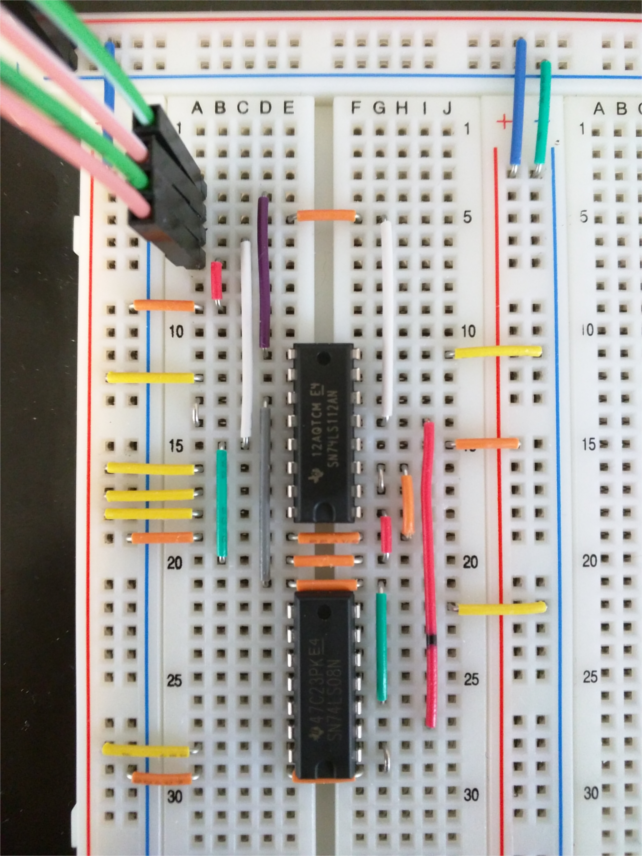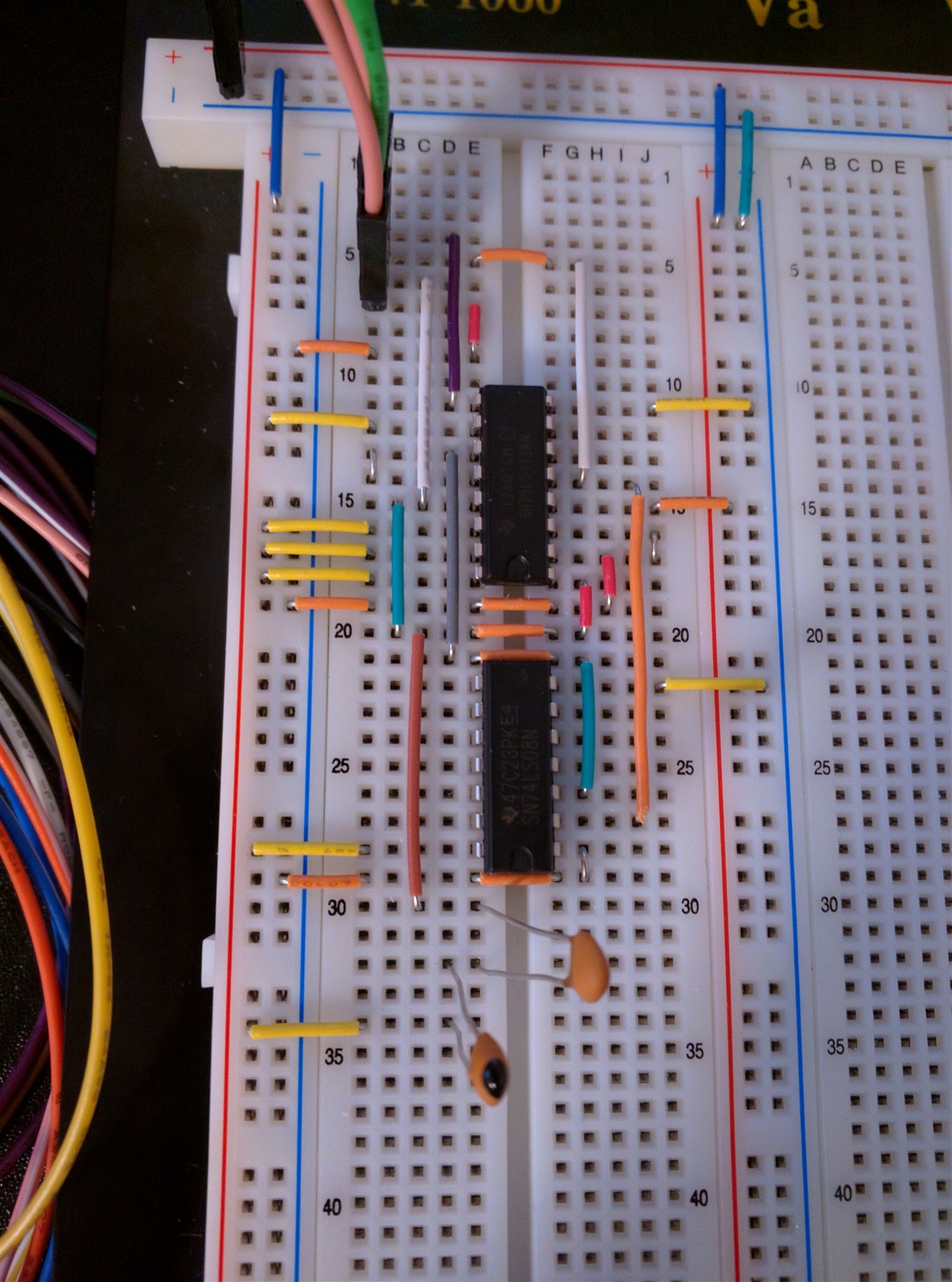The task in my lab said to build a 2-bit binary up-counter and provided the following schematic:
So I built that circuit on a breadboard and wired Pin 1 and 13 together in parallel. The circuit would only increment the output from Pin 5(Q0). After some time of building, rebuilding, checking voltages, etc., I isolated the chips and tested everything independently. Both FFs worked as expected. Then I wired the above circuit bit by bit to see when something went wrong. I accidentally forgot to connect Pin 13 to the CLK input and suddenly the circuit worked. I checked all 5 chips I have and 2 locations on the breadboard. None of my chips function in the circuit if both Pin 13 and Pin 1 receive the same signal. Which doesn't sound right at all. I modeled the above diagram in a simulation program and it works fine and the datasheet says those pins are independent. There is one other student who had the exact same issues I did. Everyone else got theirs to work.
So did we get a bad lot, or is there something I'm not doing correctly? I've already turned the lab in, so I'm not looking for any answers to that end. I'm just generally curious as to why the first diagram doesn't work. I appreciate any insight you guys can give!
Here are the circuits I built in case it helps.
Circuit as interpreted from the given diagram. The black spot is just a marking and the leftmost blue bus bar was used to send the Count signal to the lower 74LS08 chip and the 74LS112AN chip.
Here are the wire designations:
Pink: Count
Green: Clock
Pink/White: Q0 (output)
Green/White: Q1 (output)
And here is the one that works. The pictured loose jumper wire is the only one that I could use to connect header pin 2 to row 20. No other jumper would work whatsoever, so I moved the input wire down instead. Pin 13 is no longer receiving a clock signal.





